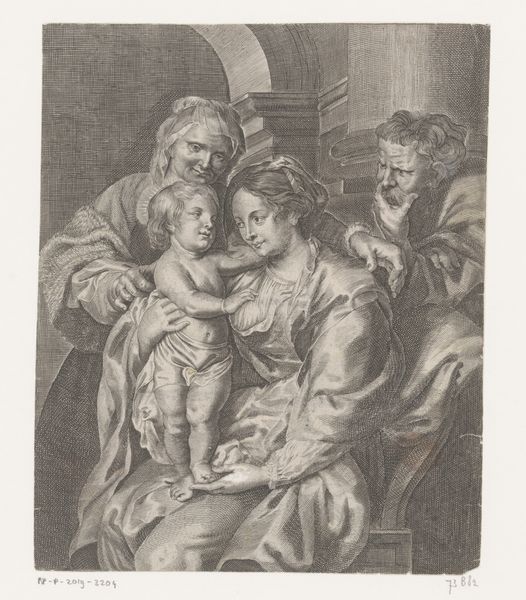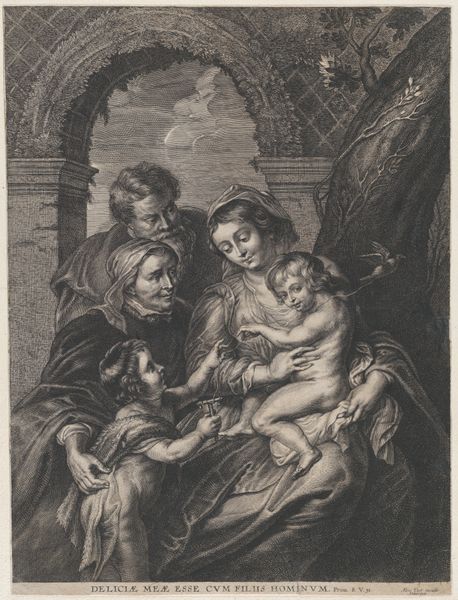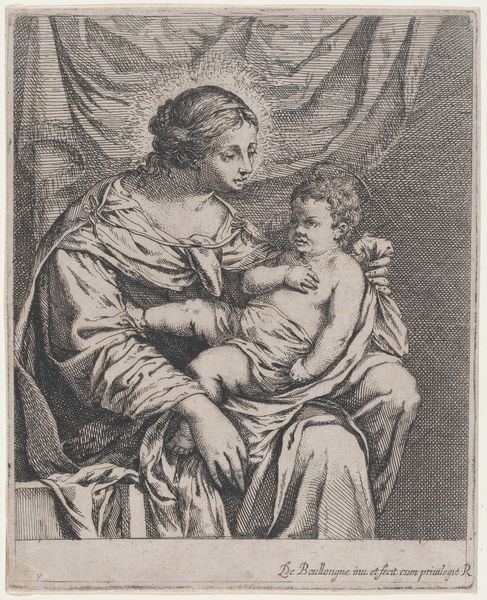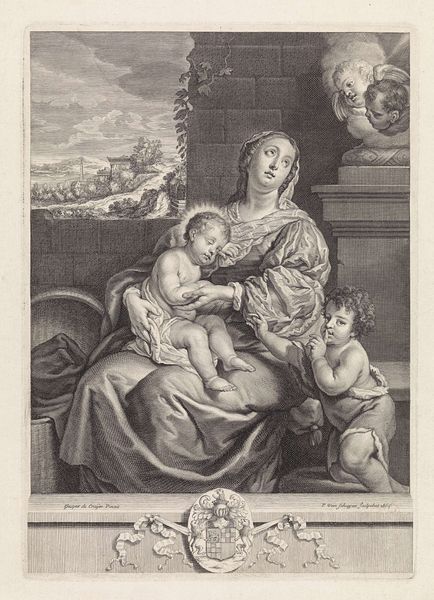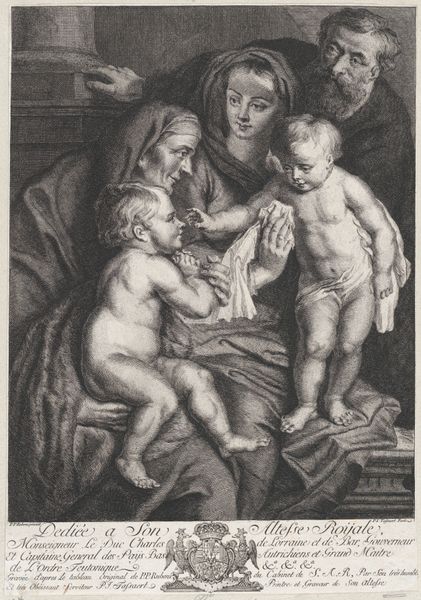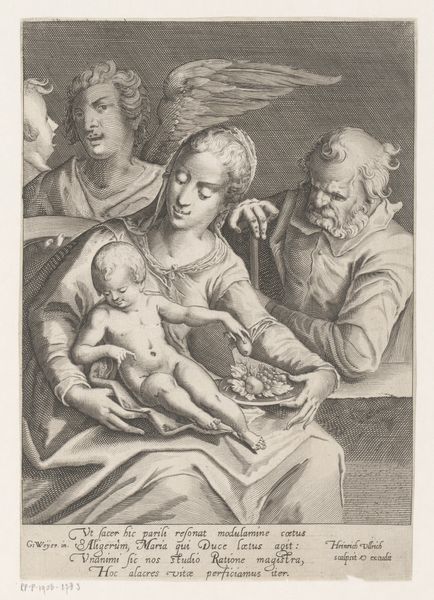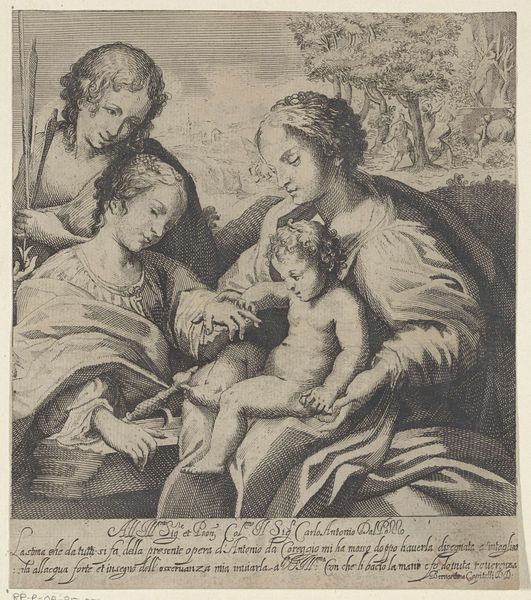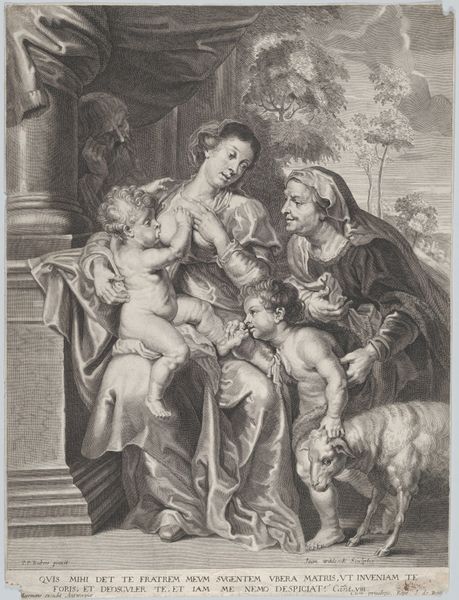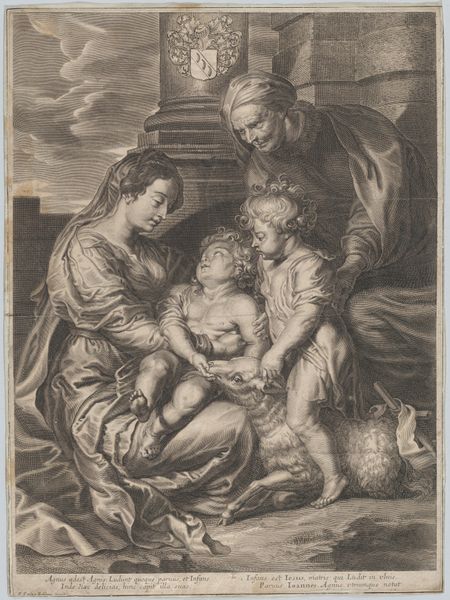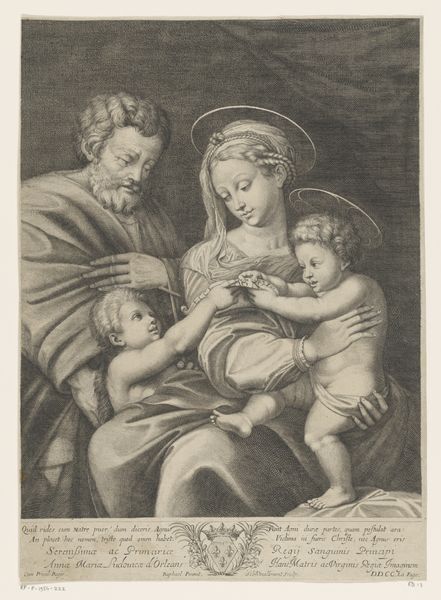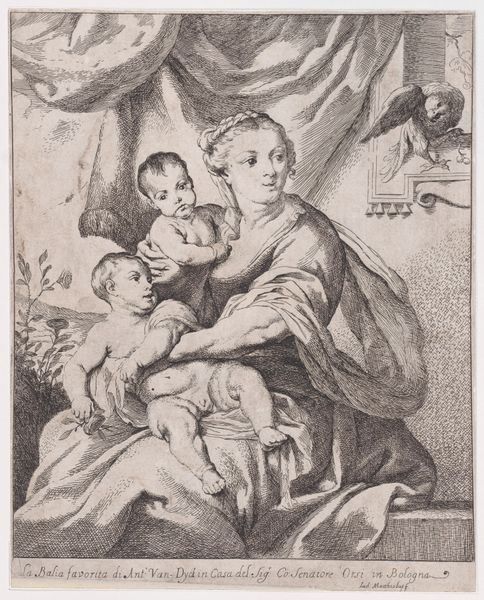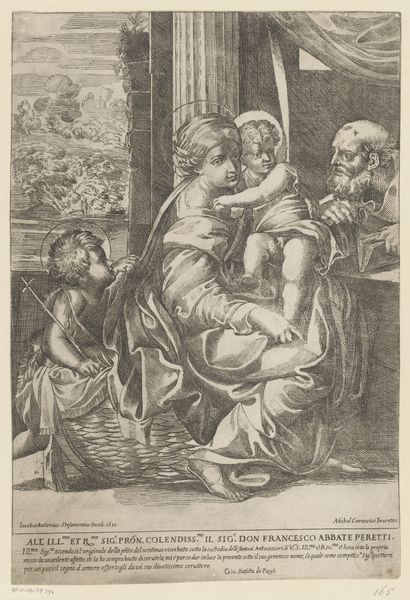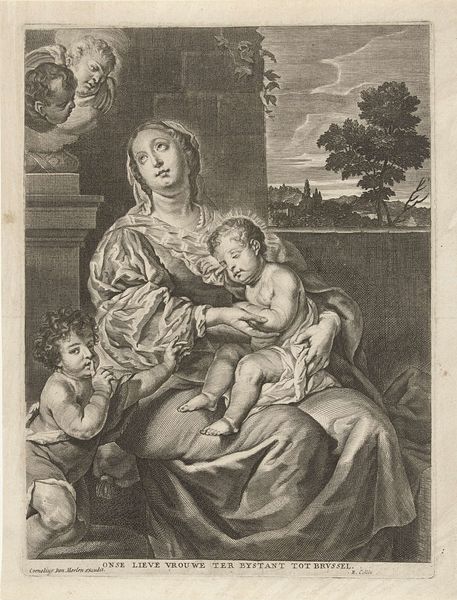
drawing, print, engraving
#
portrait
#
drawing
#
baroque
# print
#
figuration
#
group-portraits
#
history-painting
#
engraving
Dimensions: Plate: 10 3/16 × 7 5/16 in. (25.9 × 18.5 cm) Sheet: 13 3/8 × 8 9/16 in. (33.9 × 21.8 cm)
Copyright: Public Domain
Editor: We’re looking at Paulus Pontius' engraving, "Holy Family with Saint Anne," created sometime between 1615 and 1670. It depicts Mary, Jesus, Anne, and Joseph. The texture is incredibly detailed given it’s an engraving, and there's an intensity in the gazes. How do you interpret this work? Curator: Considering its historical context, I see more than just a religious scene. Notice the intimate positioning of Mary nursing Jesus, flanked by Anne and Joseph. This image normalizes and perhaps even idealizes breastfeeding, connecting it to divinity. It’s worth considering what that imagery might signify for women of the 17th century, particularly within a patriarchal and religious framework. What social message could it send, or what role did the women of that era fulfill according to their culture? Editor: So, you’re suggesting it could be more than just a depiction of a biblical scene? Curator: Precisely. Visual representations of motherhood often served as both instruction and aspiration. This engraving could have reinforced expectations around women's roles in nurturing and raising children while simultaneously acknowledging the profound bond between mother and child. But also how Joseph observes. Editor: He looks...skeptical. Curator: Or thoughtful? His posture is so human, caught in some thought. It underscores, to me, that the work operated on many levels. Religious instruction, models of behavior, even reflections of societal expectations. Editor: I never considered how the act of breastfeeding could carry that much social weight back then! Curator: Art is never created in a vacuum. It’s always reflecting, reinforcing, or challenging existing power structures and cultural norms. Recognizing this helps us engage more critically with these historical pieces. Editor: I'll definitely view Baroque art differently from now on. Thanks for helping me see new perspectives!
Comments
No comments
Be the first to comment and join the conversation on the ultimate creative platform.
